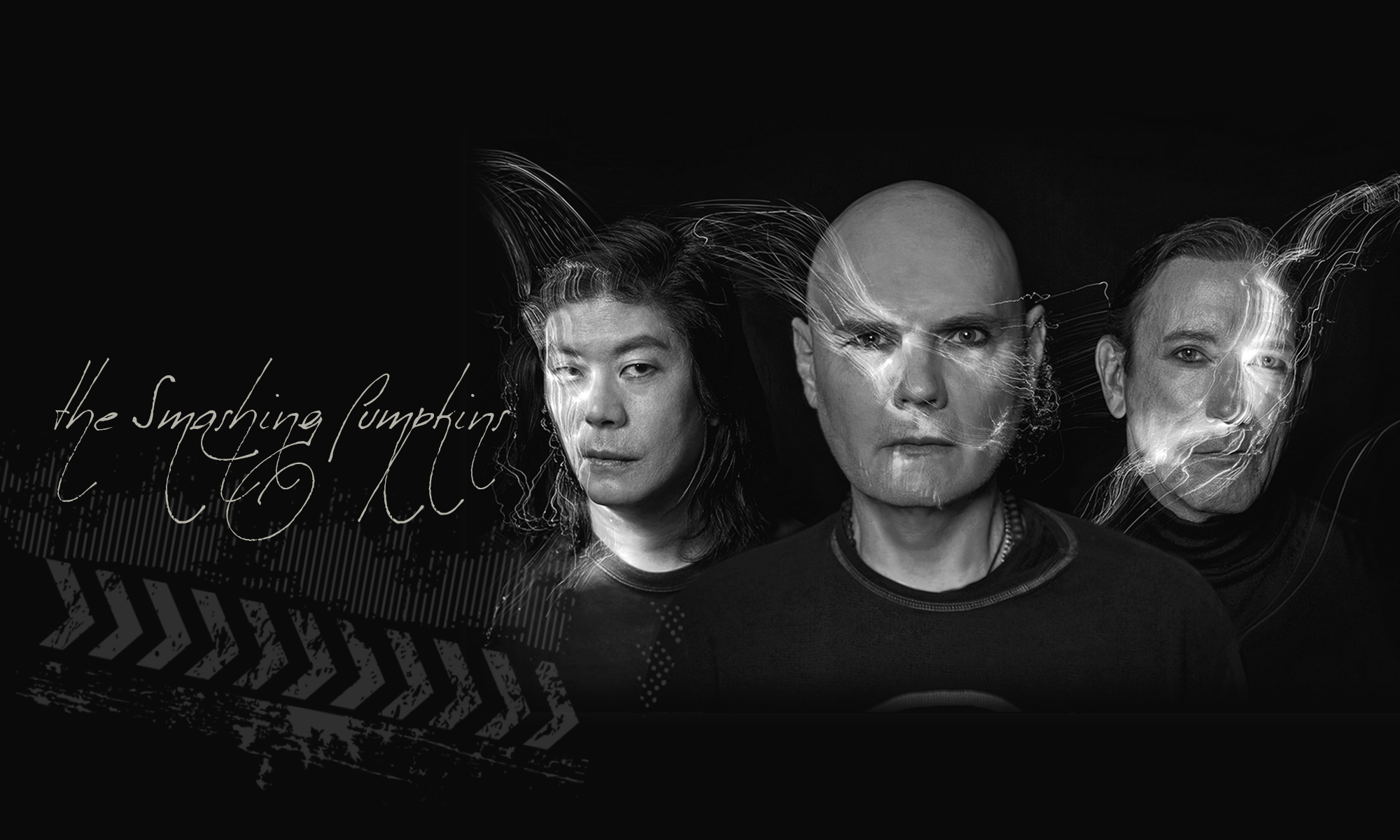
tennessean.com にビリー・コーガンのインタビューが掲載されています。先日のラジオ出演時に話していた事に加え、ニューアルバムのリリースに向けて、メンバー一丸となって製作に取り組んでいる事がうかがえるコメントをしています。
ジェイムズ復帰後の2018年に、オリジナルメンバー3人が揃って「 Shiny and Oh So Bright, Vol. 1 / LP: No Past. No Future. No Sun. 」をPumpkinsとしてリリースしていますが、インタビューの中でビリーは、
When we got back together with James (Iha, founding guitarist), we went in with Rick Rubin and did eight songs. It was put out as a formal album, but I said at the time — and I did mean it — in my eyes, it wasn’t an album. We didn’t approach it like we’ve approached every other album we’d ever done, which is more like making a movie.
This is the first album since the album that came out in 2000, “Machina,” where me, James and Jimmy worked on something for a very long time. It’s got a greater conceptual base, and it’s probably a wider swath of music. The last one was kind of like, “Let’s just jump in, record some stuff real fast, and let it be what it is,” … so I’m excited about this, because we’re kind of back in the lane of taking a risk, and trying to bring something new to the table, as opposed to just aping what we’re known for.
https://www.tennessean.com/story/entertainment/music/2020/01/31/billy-corgan-interview-new-smashing-pumpkins-album/2854121001
「ジェームスが戻った時に、僕らはリック・ルービンとスタジオに入り8曲を作り、バンドの正式なアルバムとしてリリースしたけれど、実際のところ、あれは他のアルバムとは違うアプローチの作品だったんだ。
いま取り掛かっているこの作品こそが、2000年に発表した「 Machina 」以来の新作だ。素晴らしいコンセプト基盤があり、おそらく音楽の幅も広い。とにかく飛び込んでみよう!なすがままに!って感じだったり、僕たちはある種のリスクを背負って新しい事に挑戦しているから、僕は本当にエキサイトしているんだ。」
と、新作がリユニオン後初となる、真のパンプキンズの作品だと胸を張って発言しています。
さらに、この記事が出たその日にビリーはこんな↓写真を自身のSNSに掲載しています。
バンドが非常に良い状態にある事が伺える写真ですねー。オリジナルメンバー3人とジェフと共に、本腰を入れて作品に取り組んでいる事が伺えて、新作がますます楽しみになりました!今の所21曲完成しているそうです。ダブルアルバムかな?
原文は下記
In a popular recording studio on Nashville’s Music Row, Billy Corgan is running a highly unusual, multi-pronged empire.
In one room, he’s cutting vocals for a new album from the Smashing Pumpkins — the band he founded 32 years ago in Chicago and became one of the top rock acts of the 1990s.
In another, he’s handling business for the National Wrestling Alliance. Corgan is the owner of the NWA, and if that surprises you, know that it’s actually the second Nashville-based wrestling company he’s been in charge of.
But sometimes, the 52-year-old needs to take a break from all that and find some grounding. Three years ago, he decided to reconnect with his roots in Middle America, driving across the country exclusively on state roads. That inspired a new Americana-leaning solo album, “Cotillions,” which he also made partially in Nashville.
Recently, Corgan took a quick breather from his multiple gigs to talk about that road trip, his vision for the Pumpkins’ next album (currently sitting at 21 tracks) and how he eventually connected with country and bluegrass music.
You put out your last album on the heels of your 2018 arena tour. How are you approaching this new album?
When we got back together with James (Iha, founding guitarist), we went in with Rick Rubin and did eight songs. It was put out as a formal album, but I said at the time — and I did mean it — in my eyes, it wasn’t an album. We didn’t approach it like we’ve approached every other album we’d ever done, which is more like making a movie.
In many ways, this is the first real album (since the reunion) where we’ve hunkered down and made a classic, “Let’s throw it all at the wall and see what happens” type of Pumpkins record. I’ve been working on it for over a year. It currently is at 21 songs, and we’re going to release it as a double this year.
This is the first album since the album that came out in 2000, “Machina,” where me, James and Jimmy worked on something for a very long time. It’s got a greater conceptual base, and it’s probably a wider swath of music. The last one was kind of like, “Let’s just jump in, record some stuff real fast, and let it be what it is,” … so I’m excited about this, because we’re kind of back in the lane of taking a risk, and trying to bring something new to the table, as opposed to just aping what we’re known for.
It seems like fans will appreciate that to the alternative, where some reunited bands scrounge up the minimum number of tracks to put out an album.
I have to say, I’m much more empathetic to the position, because you can only understand what it’s like to be under a band name after 30 years until you’ve done it. As a fan, you sit there, at least I do, and you make judgements about how people go about their business, but I can say that after this amount of time, and being lucky enough to have some classic albums in your pocket, it’s really, really difficult to bring something new to the table. You almost have to work twice as hard.
So we made that commitment last year. I literally started in January of 2019, and I’m still working on it as we’re talking. We’re in the other room, cutting vocals. It’s been a huge effort.
But the way I look at it is, it’s the twin flame of “Can you tour at a very, very high level?” Which thankfully we are able to do again. To go back to playing arenas was pretty mind-blowing after 20 years.
But that’s the other part of the flame, is “Can you bring back to the table a higher level of work, and song, and justify why you’re standing there … can you also offer something musically?” That’s been my big sort of rant behind the scenes. If we’re not going to do that, then what are we?
Why did you end up coming to Nashville to record? Practical reasons?
It’s a bit of a lot of things. Certainly Nashville affords studios that still run like old-fashioned studios, which I prefer. There’s obviously a lot of musicians here you can work with, and the people I work with live here
Plus, the NWA office, my wrestling company, is out of Nashville, so I’m down here a lot anyway just for wrestling business.
And I like it. It’s no surprise that it’s one of the fast-growing cities in America, and certainly has great history — nothing that you don’t know. But for me, as a Chicagoan that would come here in the early ’90s when there were tumbleweeds rolling down (Broadway), it’s great to see the city be revived and totally on fire.
I really enjoyed watching the “Thirty Days Revisited” documentary of your cross-country journey. What made you want to take that trip?
I was kind of having a crisis of faith moment, and I found myself wanting to wander around America to try to figure out what the heck I was doing.
Not to be political or sociopolitical, but there’s obviously a lot of changes going on in our country, so having grown up in middle America, sometimes I find that getting into middle America reminds me of my values, where I came from, where my family came from, and re-grounds me to some basic principles about how to operate — particularly in the world of entertainment, which as we all know, there’s no grounding there (laughs).
Sometimes I need to be reminded of where I came from, and the world that my ancestors grew up in. I literally had a grandfather who was a coal miner and ran bootleg liquor … Somehow reconnecting to that, it got me musically centered again.
There’s a bit in the documentary footage where you’re going into RCA Studio A, and you mention that the song you’re going to cover was probably recorded there in the first place. What song was it?
“The End of the World” by Skeeter Davis. I know Chet Atkins produced it, so it was either in there or just next door. Lately, I’ve been listening to a lot of Waylon Jennings, and I think he liked recording in that block right there too.
Either way, either building, there’s such tremendous history. It blows my mind.
In Chicago, growing up, (country) had the classic (stigma of) “Oh, it’s redneck music.” And now I realize how incredible that world was. I didn’t know it growing up, because of the way people talked about it. So now that I’m a fan and I love that music, it’s really an honor to walk those halls.
Was there an artist or an album that really made you turn the corner (into country)?
I just found myself listening to a lot of bluegrass about four or five years ago — Bill Monroe. I found suddenly that a lot of things (in the music) made sense. I don’t know if was a DNA thing (laughs), the songs they were singing and how they were singing, and what they were singing about. I thought, “This has a lot more to do with me than I think.”
When the Pumpkins are active, do you put your solo work to the side, or do they run concurrently?
I’ve actually gotten a lot more comfortable with everything running at the same time. My ideal dream of life is I can do everything I want to do at the same time. My wrestling partner was in here today, so while we’re working on vocals in one room, I’m in the other room, working on wrestling stuff. That’s my idea of a good time, I guess (laughs).
Do the kids [Note: Corgan has a 4-year-old son and 1-year-old daughter] get to travel with you, or do they stay home?
Oh yeah. Me and my son, we took a little trip after Christmas to New Orleans, and then after New Year’s, my son and I took the train from New Orleans to Los Angeles. It was just me and him for 12 days.
That sounds nice — or maybe, mostly nice?
It’s great. When he’s melting down and says, “I want Mommy,” that doesn’t help, but all the other times are great. You know, he was screaming on the train, and I was like, “You’re gonna get us kicked off the train with that sound.” Anyone who’s heard any of my music knows that screech. He’s got the same genetic marker.
Check out this story on Tennessean.com: https://www.tennessean.com/story/entertainment/music/2020/01/31/billy-corgan-interview-new-smashing-pumpkins-album/2854121001/

